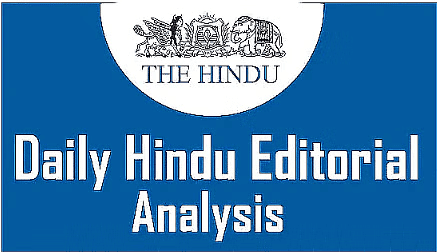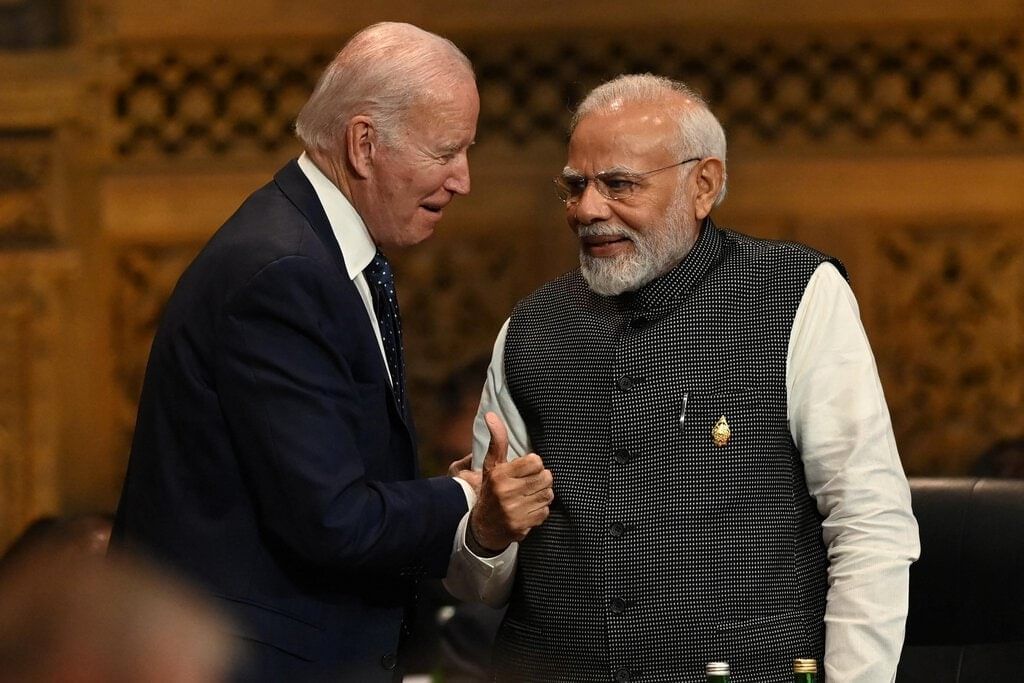The Hindu Editorial Analysis- 25th September 2024 | Current Affairs & Hindu Analysis: Daily, Weekly & Monthly - UPSC PDF Download

The NCrF as a framework for well-rounded education
Why in News?
Cognitive inconsistency and axiomatic irrationality become evident when a few put forth the view that the spirit behind and the structural reforms advocated by the National Education Policy (NEP) 2020 are unsuitable. The NEP is a vision document that provides a broad contour of how education can be transformed in India while getting away from the clutches of the colonial mindset. The National Credit Framework (NCrF) is one of several transformative reforms that are derived from the NEP, providing a flexible template for educational institutions offering school, higher, vocational, and skill education.
What is National Credit Framework?
Defining the Academic Year and Credit System
- The academic year, as per the NCrF, is determined by the number of hours a student engages in learning activities. Students are awarded credits based on these hours at the conclusion of each academic year.
Understanding the NCrF Meta-Framework
- The NCrF is a structured framework composed of three main components:
- National School Education Qualification Framework (NSEQF)
- National Higher Education Qualification Framework (NHEQF)
- National Skills Qualification Framework (NSQF)
Key Provisions of the NCrF
Integration of Academic and Vocational Education
- The NCrF, in alignment with the National Education Policy (NEP), emphasizes the integration of academic and vocational education.
- This approach ensures a harmonious equivalence between the two educational streams, fostering a more cohesive learning environment.
Credit System Explained
- The NCrF establishes a credit system based on 'Notional Learning Hours,' with a total of 1200 hours in a year.
- Students can earn a minimum of 40 credits for 1200 hours of learning annually, with 20 credits per semester.
- 'Notional hours' encompass the time required for attending classes, studying for tests, and completing assignments and homework.
- Throughout their entire schooling period, students can accumulate a total of 160 credits.
- By the end of a three-year bachelor's degree program, students will have earned 120 credits. For Ph.D. graduates, the total credits earned would be 320.
- Students can also earn credits for participating in extracurricular activities such as Olympiads, science quizzes, internships, and part-time jobs during their college years.
Credit Levels in the NCrF
- The NCrF introduces various credit levels ranging from level 1 to level 8:
- School Education:
- Grade 5: Level 1
- Grade 8: Level 2
- Grade 10: Level 3
- Grade 12: Level 4
- Higher Education: Credit levels range from 4.5 to level 8.
- Vocational Education and Training: Levels 1 to 8.
Aadhaar-Enabled Student Registration
- The NCrF incorporates Aadhaar-enabled student registration, followed by the opening of an Academic Bank of Credit (ABC) account for each student.
- This account will facilitate the deposit of degrees and credits, along with a knowledge locker similar to DigiLocker for secure storage.
Challenges in Implementing the NCrF
- Standardisation: The NCrF encompasses various verticals such as NSEQF (National Skills Educational Qualifications Framework), NHEQF (National Higher Educational Qualifications Framework), and NSQF (National Skill Qualifications Framework). Achieving standardisation across these verticals while addressing the specific needs of each stream may prove to be challenging.
- Data Security and Privacy: The reliance on Aadhaar-enabled student registration and the establishment of an academic bank of credit (ABC) account for storing student data raises concerns regarding security and privacy. Safeguarding the security and confidentiality of this data will be paramount for the successful implementation of the NCrF.
Conclusion
- The National Credit Framework (NCrF) aims to facilitate smooth horizontal and vertical mobility across different educational streams in India.
- However, its successful implementation may encounter several challenges, including standardisation, data security, and acceptance.
- Addressing these challenges will necessitate collaborative efforts from various stakeholders to ensure that the framework remains relevant and effective in meeting the evolving needs of India’s education system.
Visit wrap-up

Why in News?
PM Modi is on official visit to the United States of America. During this visit, he met with the President of the USA, Joseph Biden on the sidelines of the Quad Summit in Delaware.
- In a special gesture, President Biden hosted the meeting at his home in Wilmington.
Key highlights of the visit
During the meeting, several important documents were adopted, outlining the progress and future plans in the U.S.-India partnership. The key documents include:
- Joint Fact Sheet: A detailed account of the expanding comprehensive and global strategic partnership between the United States and India.
- Roadmap for U.S.-India Initiative: A plan to build safe and secure global clean energy supply chains.
Key Highlights from the Joint Fact Sheet
India's National Security Semiconductor Fabrication Plant
- Introduction of the Plant: India is set to establish its first national security semiconductor fabrication plant in collaboration with the United States. This facility will focus on producing chips for military applications and critical telecommunications.
- Support and Technology Partnership: The plant will be backed by the India Semiconductor Mission and involves a strategic technology partnership between Bharat Semi, 3rdiTech, and the US Space Force.
- Focus on Specific Semiconductors: The plant, named ‘Shakti,’ will specialize in producing infrared, gallium nitride, and silicon carbide semiconductors.
- Pioneering Facility: This facility will not only be India’s first such plant but also one of the world’s leading multi-material fabs dedicated to national security. It marks a significant collaboration, akin to the civil nuclear agreement, as it is the first time the US military has partnered with India for advanced technologies.
Establishment of the GF Kolkata Power Centre
- The leaders recognized the importance of building resilient and secure semiconductor supply chains, which includes the establishment of the GlobalFoundries’ (GF) Kolkata Power Center.
- The GF Kolkata Power Center will play a crucial role in enhancing semiconductor supply chains and fostering innovation in areas such as zero/low-emission vehicles, AI, and connected devices.
Nasa and ISRO Collaboration on the International Space Station
- The leaders welcomed the announcement of the first joint NASA-ISRO research project scheduled for 2025 aboard the International Space Station.
U.S.-India Global Challenges Institute
- The establishment of the U.S.-India Global Challenges Institute, with over $90 million mobilized over five years, aims to support impactful research and development partnerships between universities in the U.S. and India.
Joint Funding Initiatives in Science and Research
- A total of $15 million in funding was announced to support joint research initiatives between the U.S. and India in areas such as next-generation telecommunications, semiconductors, AI, and sustainable technologies.
Next Generation Defense Partnership
- The leaders commended the progress in U.S.-India defense ties, including India’s acquisition of 31 MQ-9B drones and collaborative production agreements for jet engines and munitions.
- They acknowledged various defense partnerships, such as Liquid Robotics’ collaboration with Sagar Defence, the establishment of a new C-130J Maintenance, Repair, and Overhaul (MRO) facility, and the INDUS-X innovation challenges.
- The leaders emphasized the importance of military interoperability, cooperation in space and cyber domains, and upcoming initiatives like Liaison Officer deployments and joint exercises, including TIGER TRIUMPH.
- Efforts to strengthen India’s MRO ecosystem and align defense procurement systems were also highlighted.
- The recent conclusion of the Security of Supply Arrangement (SOSA), aimed at enhancing the mutual supply of defense goods and services, was applauded by the leaders.
Catalyzing the Clean Energy Transition
- The leaders celebrated the collaboration between the U.S. and India in the field of clean energy, marking the launch of a roadmap to expand safe energy supply chains.
- This includes the unlocking of $1 billion for renewable energy projects, U.S. International Development Finance Corporation (DFC) loans for solar manufacturing, and partnerships focused on hydrogen safety and critical minerals.
- They emphasized the Strategic Clean Energy Partnership (SCEP) aimed at fostering innovation, addressing climate change, and creating job opportunities.
- Both leaders endorsed initiatives such as the Green Transition Fund, public-private task forces, and India’s progress towards membership in the International Energy Agency (IEA), reaffirming their commitment to accelerating clean energy deployment and manufacturing.
Empowering Future Generations and Promoting Global Health and Development
- The leaders celebrated the introduction of the new U.S.-India Drug Policy Framework for the 21st Century and its accompanying Memorandum of Understanding.
- This framework aims to enhance collaboration in disrupting the illicit production and international trafficking of synthetic drugs and precursor chemicals, along with fostering a comprehensive public health partnership.
- The leaders also applauded the launch of the Bio5 partnership, which includes the United States, India, Republic of Korea, Japan, and the European Union, aimed at closer cooperation on pharmaceutical supply chains.
- The formal launch of the U.S.-India Global Digital Development Partnership was welcomed by the leaders. This partnership aims to unite U.S. and Indian private sector companies, technology, and resources to promote the responsible use of emerging digital technologies in Asia and Africa.
- Strengthened trilateral cooperation with Tanzania through the Triangular Development Partnership, led by the U.S. Agency for International Development and India’s Development Partnership Administration, was also welcomed. This partnership focuses on addressing global development challenges and fostering prosperity in the Indo-Pacific, with an emphasis on advancing renewable energy projects, including solar energy, to enhance energy infrastructure and access in Tanzania.
Repatriation of Indian Antiquities
- In July 2024, the U.S. and India signed a Cultural Property Agreement aimed at implementing the 1970 Convention on preventing the illicit import, export, and transfer of cultural property.
- This agreement marked the culmination of years of collaboration between the two nations.
- As part of this effort,297 Indian antiquities were repatriated from the U.S. to India in 2024, symbolizing a significant step in preserving and protecting cultural heritage.
Roadmap for U.S.-India Initiative to Build Safe and Secure Global Clean Energy Supply Chains
Objectives of the Roadmap
- Job Creation: Create good jobs through clean energy projects.
- Accelerate Clean Energy Deployment: Encourage fast global use of clean technologies.
- Global Climate Goals: Aim for shared climate targets.
Key Initiatives
Financial Support
- Unlock $1 billion in multilateral funding through the International Bank for Reconstruction and Development (IBRD) for clean energy projects.
- Support the growth of manufacturing in solar, wind, batteries, and energy grid systems.
Manufacturing Focus
- Find investment opportunities in clean energy supply chains, targeting:
- Solar wafers and cells
- Wind turbine components
- Energy storage systems
- Electric vehicle battery packs
- High-efficiency cooling technologies
Collaboration with Private Sector
- Partner with industry to develop pilot projects and build partnerships, especially in Africa for solar and electric vehicle deployment.
- Engage the U.S. Development Finance Corporation (DFC) and Indian companies to fund clean energy component manufacturing.
Trilateral Relationships
- Form partnerships with African countries focused on clean energy, emphasizing the conditions for project success and financial models.
Policy Development
- Share ideas on policies that boost demand for locally made clean technologies.
- Utilize existing laws like the U.S. Bipartisan Infrastructure Law and India's Production Linked Incentive Schemes to improve investment security.
|
38 videos|5293 docs|1118 tests
|
















